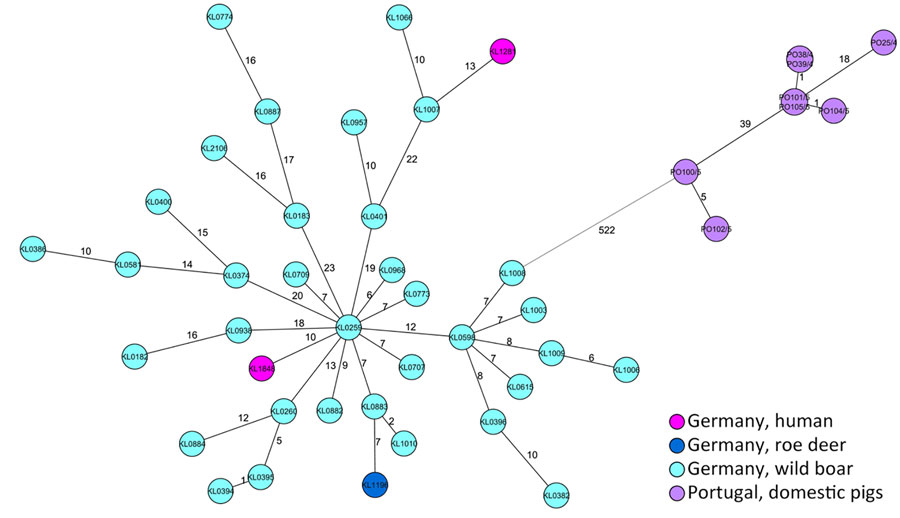Volume 31, Number 7—July 2025
Dispatch
Human Infections by Novel Zoonotic Species Corynebacterium silvaticum, Germany
Figure 2

Figure 2. Minimum-spanning tree of an ad hoc Corynebacterium silvaticum core-genome multilocus sequence typing scheme of 2012 target loci displaying isolates from 2 cases in Germany (KL1281 and KL1848), and reference sequences. Shown are relationships with 35 animal-derived isolates from Germany and 8 isolates from clade 1 from pigs in Portugal. Allelic distances are indicated at connection lines.
1These authors contributed equally to this article.
2Current affiliation: University of Cambridge, Cambridge, UK.
Page created: May 01, 2025
Page updated: June 25, 2025
Page reviewed: June 25, 2025
The conclusions, findings, and opinions expressed by authors contributing to this journal do not necessarily reflect the official position of the U.S. Department of Health and Human Services, the Public Health Service, the Centers for Disease Control and Prevention, or the authors' affiliated institutions. Use of trade names is for identification only and does not imply endorsement by any of the groups named above.